Renovation of a Mature Border – Part 1

Is your whole garden a place of beauty where butterflies sip, birds sing and you love to linger?
Or do you have an area of your garden that is "just what it is". You neither love it, nor hate it – you just haven't got around to thinking about it? I do.
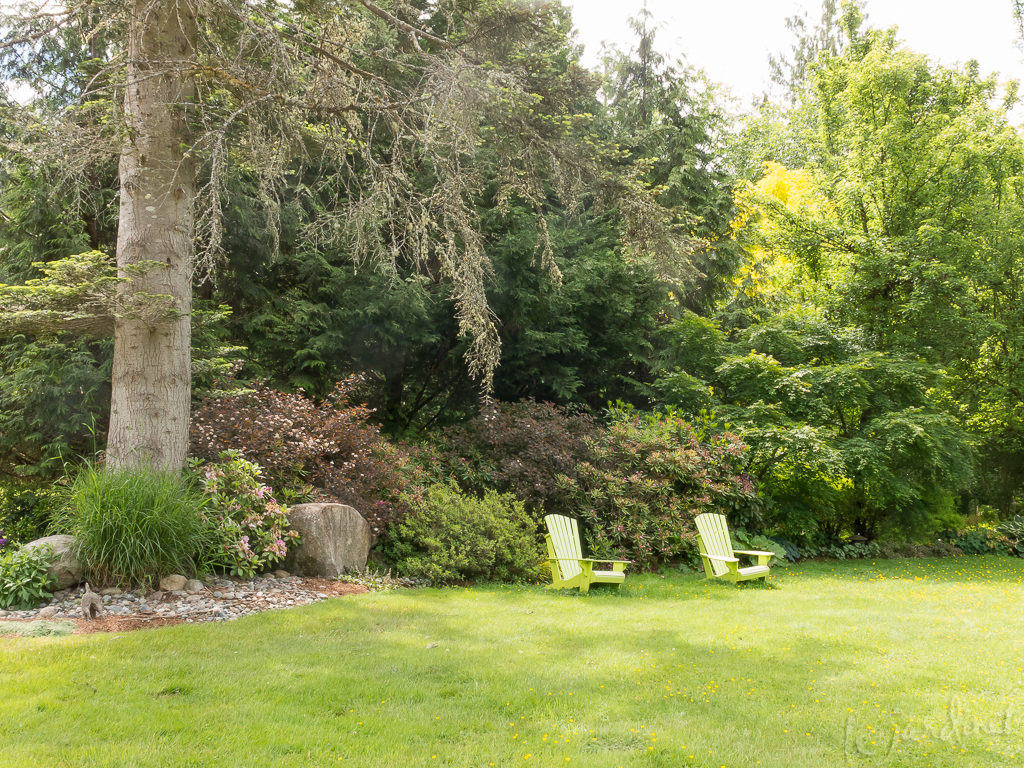
June 2018 – drab and overgrown. Time to THINK about this space!
This is the only remaining part of the original garden installed by the previous homeowner, using by her own admission "leftovers' from her landscaping business. In many ways it's a good design: an arc of evergreen conifers is fronted by broadleaf evergreens (Rhododendrons) and a single golden leafed spirea. Boulders to one side and a clump or rhubarb (a great ornamental plant that is also edible) to the other gives this border year round interest that looks especially lovely in spring. For a few weeks.
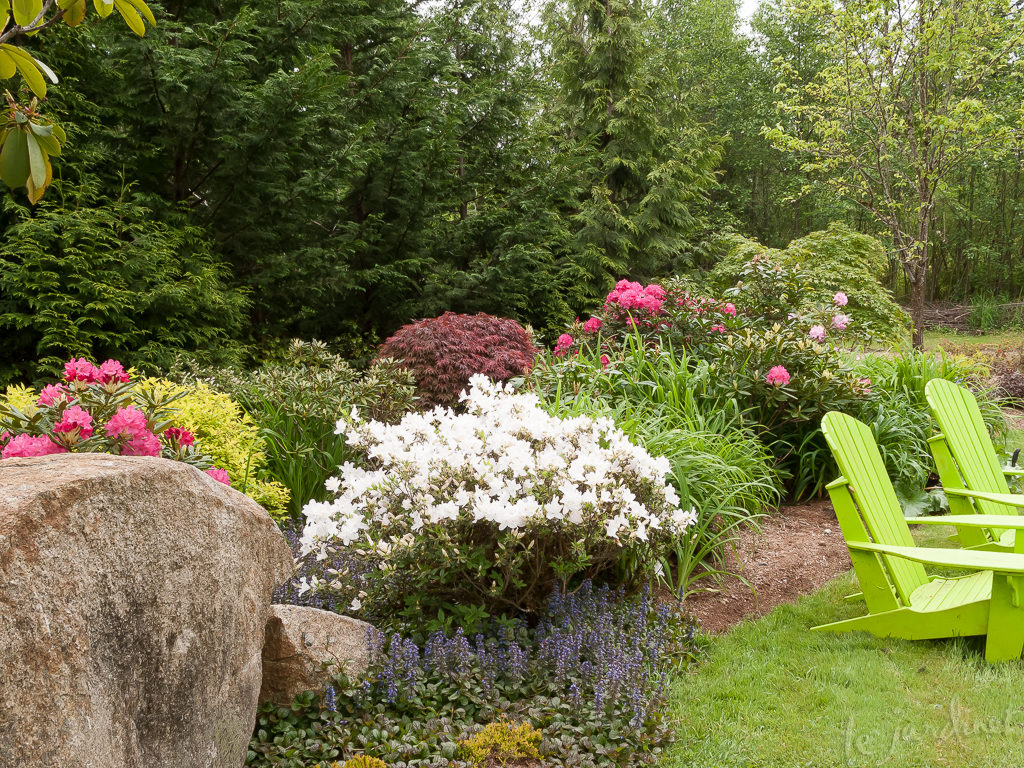
In May 2011 it looked lovely but the red leaf maple died that same year and the golden spirea has long since been swallowed by the Rhodies
The Problem
And therein lies the problem. The dark green rhodie leaves against the dark green conifers become a visual black hole for most of the year. The single, golden spirea does help although it is now getting buried behind the rhodies as they have got so large. About 6 years ago I added two Coppertina ninebark into the mix, the bronze foliage adding some more color – which helped. But it's still pretty blah, especially compared to the rest of the garden.
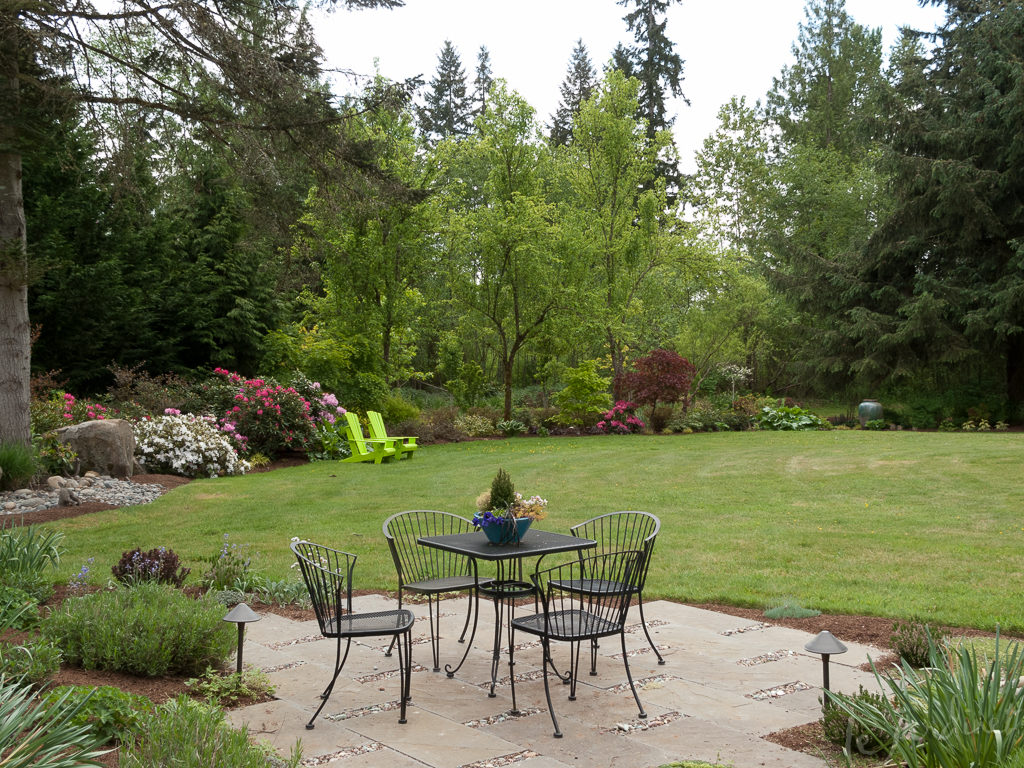
May 2013 – still acceptable in spring and the addition of two bronze ninebarks behind the rhodies helped a little.
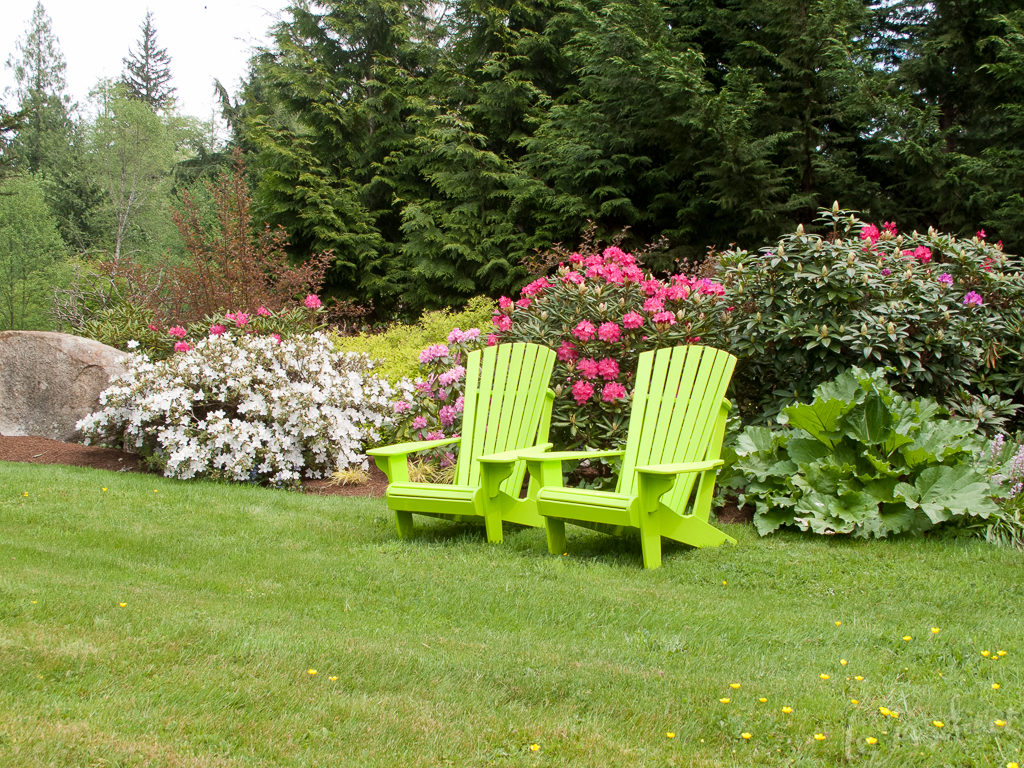
May 2013 – the ninebarks flank the still visible spirea and the rhodies look healthy. This was before we had several hot summers in a row though.
Other Challenges
Lack of irrigation and increasingly dry summers have added another issue. The shallow rooted rhodies really struggle by mid-August and there is just no way to get a hose to them. So drought stress, combined with lacebug stippling and vine weevil-notched leaves have left these "evergreen' shrubs looking unsightly and unhealthy.
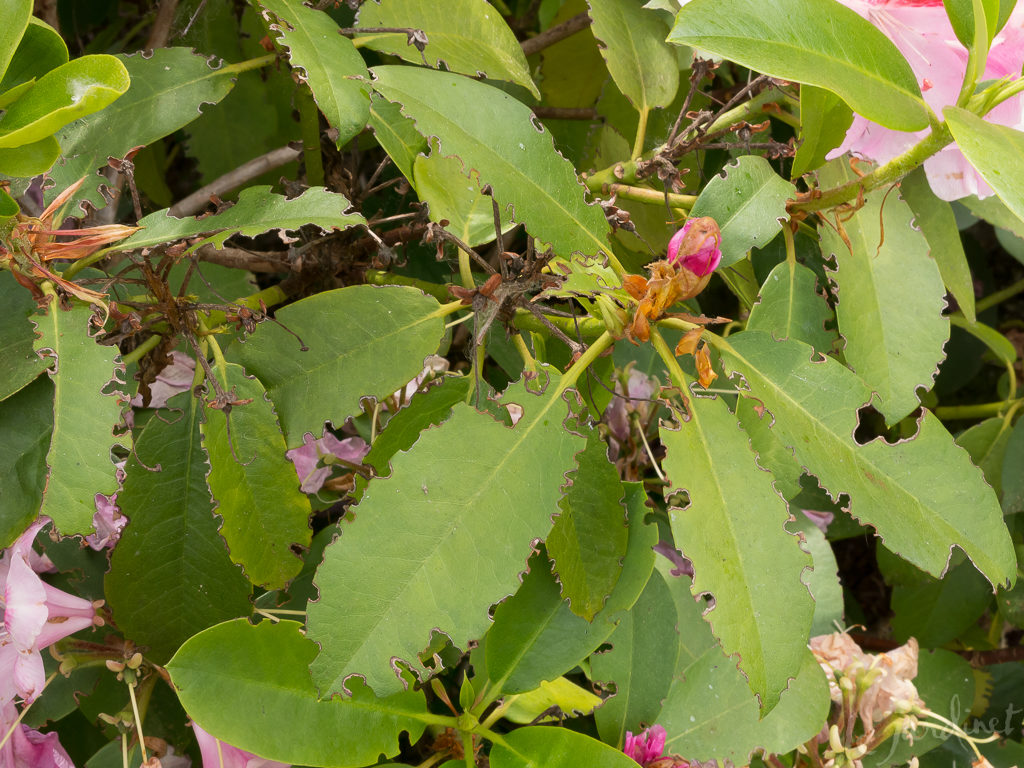
Vine weevil damage is unsightly and not easy to control organically
Plan A
We thought we had a solution, however. We discovered an old well head right in the midst of this border and surprisingly it still has water and is fairly shallow, so Andy has installed a sump pump and I have a professional quality 3/4" soaker hose ready to wrap around those poor shrubs.
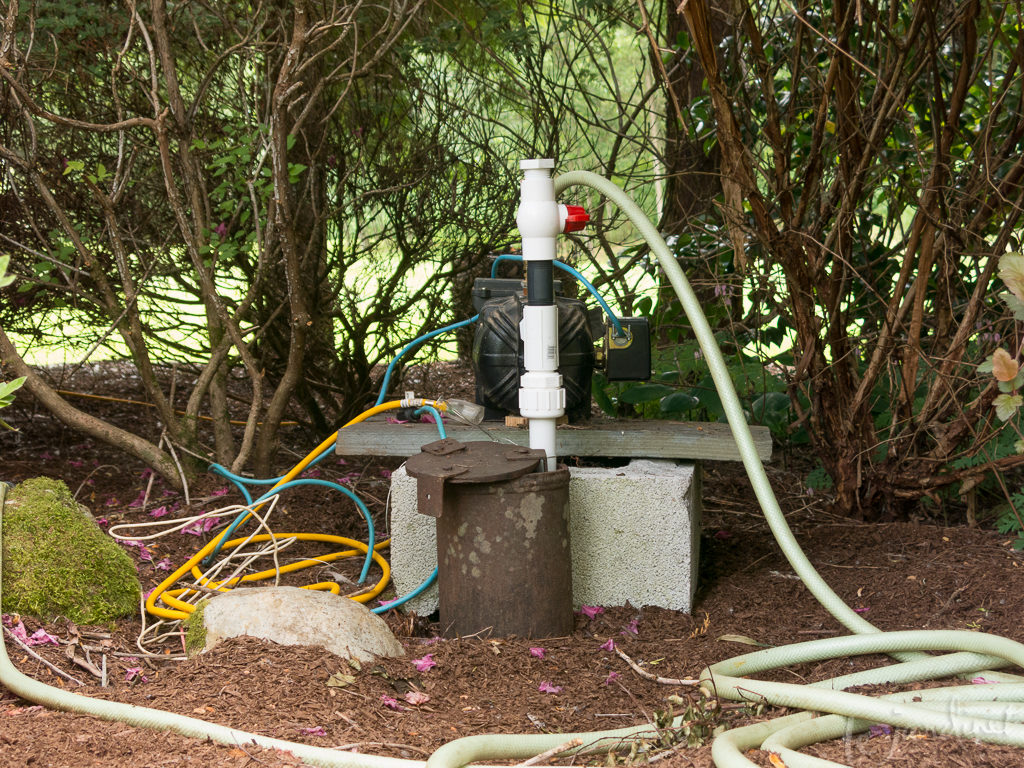
The well head can easily be disguised by plants yet accessed from behind
The plan was to hard prune the rhodies, fertilize , then allow them to re-grow lush and healthy over the next couple of years, with help from this newly discovered water source.
But then I stood back, both literally and figuratively and asked if that was what I really wanted. Did I love those rhodies enough to do all that and continue the battle with various insects? And the lack of foliage contrast wouldn't really be resolved.
Did they meet my "low maintenance-high value" criteria?
In short – NO.
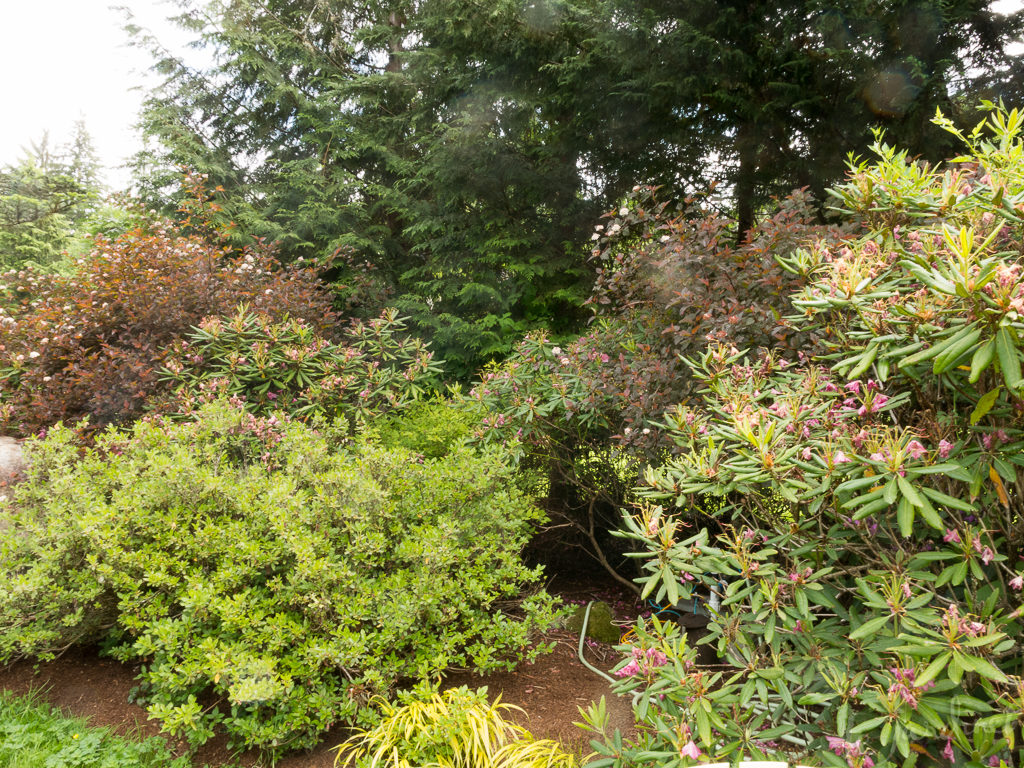
June 2018 – Past its prime and pretty ugly with badly disfigured shrubs
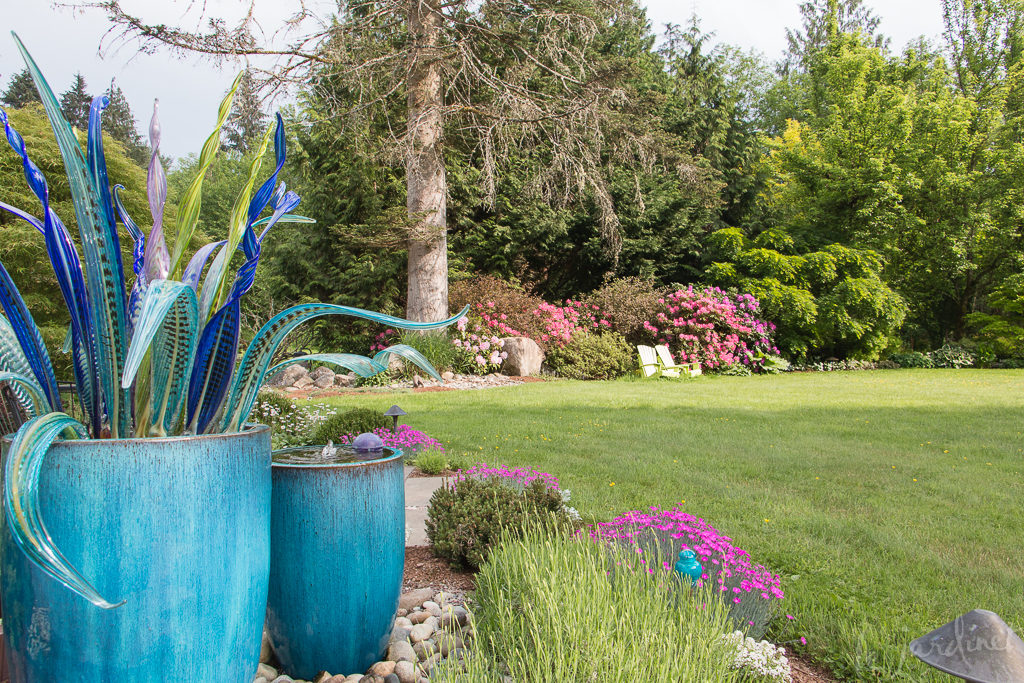
May 2018 – even in bloom this year it lacked the sparkle of its youth
Plan B
Those big, old rhodies are coming out, the smaller white-flowering azalea will be hard pruned/fertilized, I'll amend the soil and then introduce a mix of low maintenance evergreen and deciduous shrubs for better foliage interest and greater unity with the rest of the garden. Shrubs here need to be deer resistant and cope with afternoon sun as well as root competition from the adjacent conifers.
My plant short list includes:
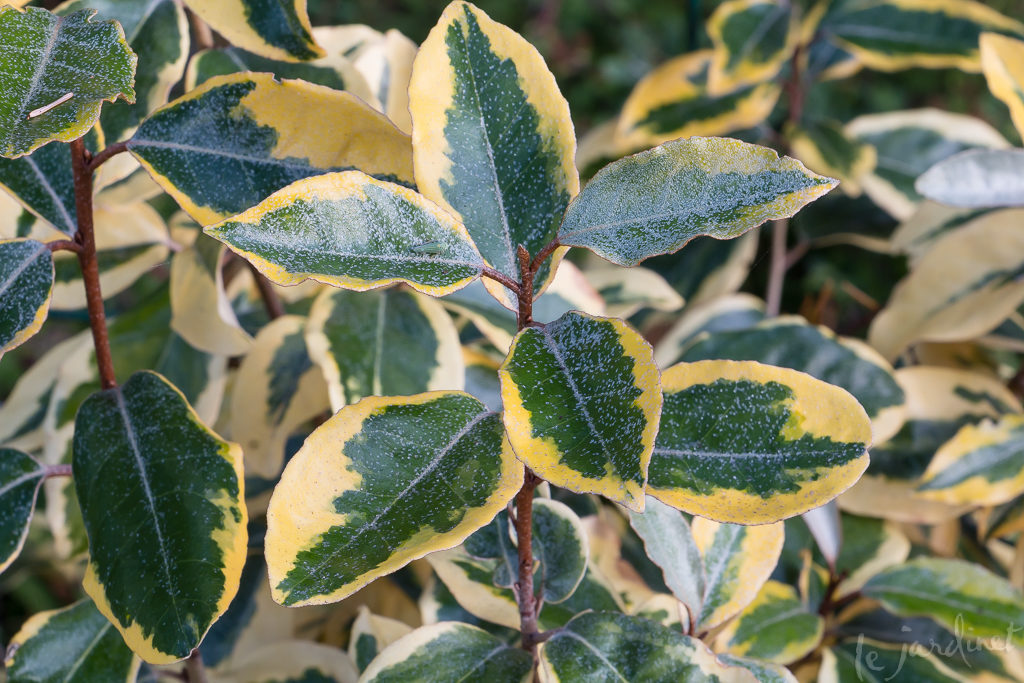
Gilt Edge silverberry will add some much needed color contrast and sparkle
- Gilt Edge silverberry (Elaeagnus x ebbingei 'Gilt Edge') – gold and green variegated foliage that is evergreen. Will eventually grow to 12' x 12' or I can prune as desired.
- Charity Oregon grape (Mahonia x media 'Charity' ) – still debating this inclusion but I think it will tolerate the afternoon sun with watering. I will need to visually separate the glossy holly-like leaves from the conifers though – perhaps layer it in front of the silverberry. The hummingbirds will love it.
- Exbury azaleas – taller varieties. Love these for the fragrant spring flowers and stunning fall color. Not sure of flower colors yet – it will probably come down to availability although I do love the orange -red of Gibralter
- Blue oat grass (Helictotrichon sempervirens) – for the front edge if there's room, or perhaps just add to the yellow Japanese forest grass already there
I'll leave the two ninebark in place but will prune them for shape in winter and will have to spray them with Deer-Out until the plants in front are large enough to create a barrier from the deer. I'll also leave – or move if possible, the mature golden leaved spirea and the rhubarb which will be much happier with more room.

The new design should better integrate with the rest of that border which features a greater variety of foliage color and textures
First things first
I've got a plane to catch. In fact when this post publishes I'll be in New Jersey as part of a 10 day trip to photograph the last 3 gardens for my new book on deer resistant gardens, after which I'll be in full-time writing mode for several weeks! Maybe the garden fairies will dig out those rhodies while I'm gone???? Or they/he may be too busy looking after our puppy! I'll take some photos of the process to share with you though.
Bear in Mind
It's not easy to renovate a mature border because whatever you do the new plants will look insubstantial compared to what was you've taken out and what has been left behind. But it's worth it if you have time to invest in your garden (we don't plan to move again) and are tired of just making do with something you never really loved in the first place. Plus I'm all about creating a garden that is lower maintenance.
A resource you may be interested in
Has this got you re-thinking part of your garden? Do you need help to assess which plants are worth the work – and which are just free-loaders? You might be interested in my short online course
Secrets to Selecting Low Maintenance Plants.
You can find out more and register using this link.
Plus the coupon code 15off will give you 15% off the price (valid until 6/30/18 only) - put the savings towards something that deserves to be in your garden!
Inspiring article…thank you Karen.
Thanks Kathy!